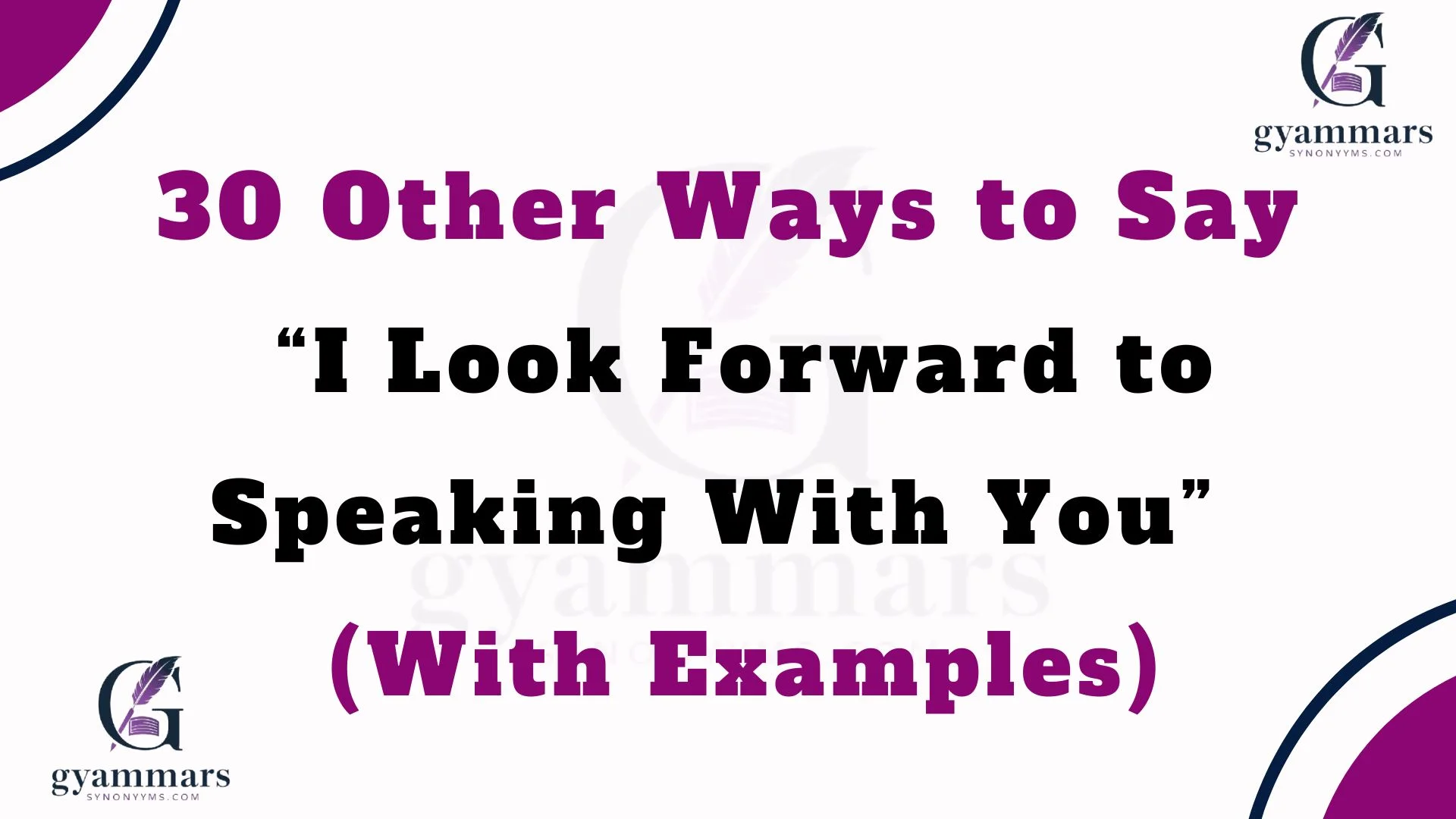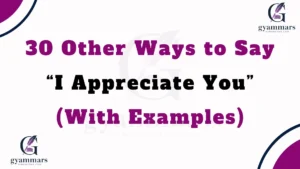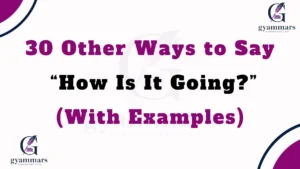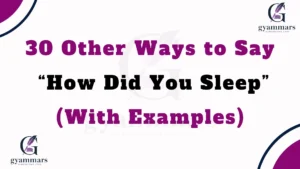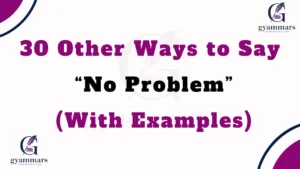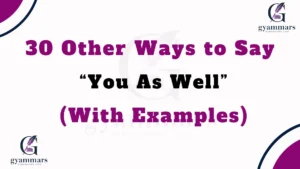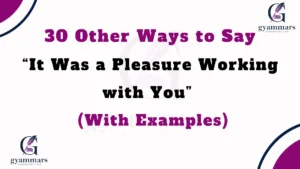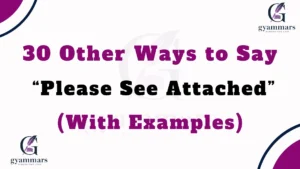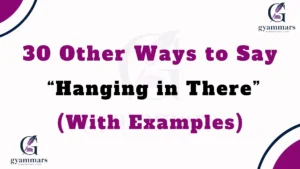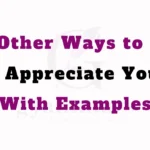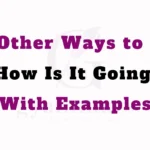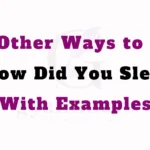When you end an email or message with “I look forward to speaking with you,” you’re not just wrapping things up — you’re expressing anticipation, respect, and warmth. But using the same phrase repeatedly can start to feel robotic or insincere.
Finding fresh, thoughtful alternatives helps your communication sound more personal, polished, and genuine. Whether you’re writing to a client, colleague, or friend, the right words can make your message feel warm and memorable.
Below, you’ll discover 30 meaningful ways to say “I look forward to speaking with you,” complete with examples, tone suggestions, and best-use notes.
What Does “I Look Forward to Speaking With You” Mean?
The phrase “I look forward to speaking with you” expresses anticipation and enthusiasm about a future conversation. It’s a polite and positive way to show that you value the upcoming interaction.
It can appear in various contexts — professional emails, interviews, or personal messages. The phrase signals respect, interest, and readiness to engage with the recipient.
Is It Professional or Polite to Say “I Look Forward to Speaking With You”?
Yes — it’s both professional and polite. It’s widely accepted in business communication because it conveys courtesy and confidence.
However, tone and context matter. For example:
- In formal settings, use it to close an email respectfully.
- In friendly or casual communication, you might prefer a warmer or more natural alternative.
Repeating the same line in every message can sound mechanical — that’s where variety helps you stand out.
Pros and Cons of Using “I Look Forward to Speaking With You”
Pros:
- Shows professionalism and positivity
- Expresses anticipation for the conversation
- Works across formal and informal contexts
Cons:
- Overused, which can make it sound generic
- Lacks emotional depth or individuality
- May feel impersonal in warm or friendly exchanges
That’s why exploring new ways to say it can make your communication feel authentic and engaging.
Synonyms For “I Look Forward to Speaking With You”
- Can’t Wait to Chat With You
- Excited to Connect Soon
- Looking Forward to Our Conversation
- Eager to Discuss Further
- I’m Anticipating Our Discussion
- I Look Forward to Our Meeting
- Eager to Hear From You
- Anxious to Speak Soon
- Looking Forward to Catching Up
- Hope to Talk Soon
- Anticipating Our Call
- Can’t Wait to Hear From You
- Looking Forward to Your Thoughts
- Eager to Continue Our Conversation
- Hope We Can Chat Soon
- I’ll Be Happy to Talk Soon
- Counting Down to Our Talk
- Looking Forward to Sharing Ideas
- Hope to Connect Soon
- Awaiting Our Conversation
- Eager to Hear Your Insights
- I’ll Be Delighted to Speak With You
- Ready to Talk When You Are
- I’m Looking Forward to Hearing More
- Hope to Speak Soon
- Anticipating Our Chat
- Can’t Wait to Exchange Ideas
- I’m Keen to Discuss
- Ready to Continue Our Dialogue
- I Look Forward to Hearing From You Soon
1. Can’t Wait to Chat With You
Definition: A friendly and enthusiastic phrase expressing excitement about an upcoming talk.
Explanation: Perfect for casual emails or messages when you want to sound approachable.
Example: “Thanks for scheduling the call — can’t wait to chat with you tomorrow!”
Best Use: Informal tone; great for peers, friends, or clients you have a rapport with.
Tone: Friendly, upbeat, casual
Additional Notes: Avoid in formal communication; too relaxed for corporate emails.
2. Excited to Connect Soon
Definition: Shows eagerness to communicate and exchange ideas.
Explanation: Works well in both professional and semi-formal contexts.
Example: “I’m excited to connect soon and hear more about your vision for the project.”
Best Use: Suitable for meetings, collaborations, or networking emails.
Tone: Positive, professional
Additional Notes: Adds enthusiasm without losing professionalism.
3. Looking Forward to Our Conversation
Definition: A softer variation that maintains professionalism.
Explanation: Direct and polite; shows respect and engagement.
Example: “Looking forward to our conversation next week.”
Best Use: Ideal for formal business communication.
Tone: Courteous, neutral
Additional Notes: Safe and versatile across all professional settings.
4. Eager to Discuss Further
Definition: Indicates readiness and enthusiasm to dive deeper into a topic.
Explanation: Especially suitable for follow-ups after meetings or proposals.
Example: “I’m eager to discuss further during our upcoming call.”
Best Use: Business or project discussions.
Tone: Confident, professional
Additional Notes: Shows initiative and engagement.
5. I’m Anticipating Our Discussion
Definition: Expresses polite anticipation.
Explanation: A refined and slightly formal alternative.
Example: “I’m anticipating our discussion on the new campaign ideas.”
Best Use: Formal or executive-level communication.
Tone: Polished, formal
Additional Notes: Works well in written correspondence.
6. I Look Forward to Our Meeting
Definition: Straightforward and formal version of the original phrase.
Explanation: Keeps the structure but specifies the event.
Example: “I look forward to our meeting this Friday.”
Best Use: Corporate and business contexts.
Tone: Professional, respectful
Additional Notes: Adds clarity by specifying the meeting.
7. Eager to Hear From You
Definition: Communicates anticipation for a reply.
Explanation: Best for when you’re waiting for feedback or confirmation.
Example: “Eager to hear from you regarding the next steps.”
Best Use: Email sign-offs, follow-ups.
Tone: Polite, semi-formal
Additional Notes: Avoid overuse; can sound pushy if misused.
8. Anxious to Speak Soon
Definition: Expresses strong eagerness to talk.
Explanation: Shows excitement but use carefully — “anxious” can imply nervousness.
Example: “I’m anxious to speak soon and get your thoughts.”
Best Use: Casual or warm tone messages.
Tone: Enthusiastic, slightly emotional
Additional Notes: Avoid in formal communication.
9. Looking Forward to Catching Up
Definition: Conveys a personal, friendly touch.
Explanation: Great for reconnecting with colleagues or friends.
Example: “Looking forward to catching up this weekend!”
Best Use: Social or informal professional contexts.
Tone: Warm, conversational
Additional Notes: Avoid in cold outreach emails.
10. Hope to Talk Soon
Definition: Simple and friendly way to express anticipation.
Explanation: Softens the tone while remaining polite.
Example: “Hope to talk soon and discuss the details.”
Best Use: Casual or semi-formal communication.
Tone: Kind, approachable
Additional Notes: Less formal but universally acceptable.
11. Anticipating Our Call
Definition: Short and confident alternative.
Explanation: Shows enthusiasm and preparedness.
Example: “Anticipating our call tomorrow — I’ve prepared some updates.”
Best Use: Business or meeting confirmations.
Tone: Confident, polite
Additional Notes: Works best when time is already set.
12. Can’t Wait to Hear From You
Definition: Expresses excitement for the response.
Explanation: A natural and emotional phrase.
Example: “Can’t wait to hear from you about the new design!”
Best Use: Friendly or personal messages.
Tone: Warm, casual
Additional Notes: Avoid in very formal emails.
13. Looking Forward to Your Thoughts
Definition: Invites feedback while showing interest.
Explanation: Encourages collaboration and engagement.
Example: “Looking forward to your thoughts on the proposal.”
Best Use: Email threads, reviews, or updates.
Tone: Respectful, professional
Additional Notes: Great for ongoing conversations.
14. Eager to Continue Our Conversation
Definition: Suggests continuity and interest.
Explanation: Ideal for follow-up meetings or discussions.
Example: “Eager to continue our conversation about your brand goals.”
Best Use: Ongoing projects.
Tone: Engaged, optimistic
Additional Notes: Adds energy and commitment.
15. Hope We Can Chat Soon
Definition: Friendly and casual alternative.
Explanation: Keeps tone approachable yet sincere.
Example: “Hope we can chat soon and catch up properly.”
Best Use: Colleagues, friends, informal chats.
Tone: Relaxed, inviting
Additional Notes: Avoid in corporate introductions.
16. I’ll Be Happy to Talk Soon
Definition: Communicates warmth and willingness.
Explanation: Emphasizes emotional positivity.
Example: “I’ll be happy to talk soon about your progress.”
Best Use: Supportive or mentoring situations.
Tone: Caring, encouraging
Additional Notes: Works well in empathetic contexts.
Read This: 30 Other Ways to Say “You’re Welcome” (With Examples)
17. Counting Down to Our Talk
Definition: Expresses strong excitement.
Explanation: Perfect for friendly or creative relationships.
Example: “Counting down to our talk next week!”
Best Use: Informal relationships.
Tone: Playful, upbeat
Additional Notes: Adds personality and charm.
18. Looking Forward to Sharing Ideas
Definition: Focuses on collaboration and brainstorming.
Explanation: Encourages mutual engagement.
Example: “Looking forward to sharing ideas during our discussion.”
Best Use: Creative or strategic meetings.
Tone: Collaborative, positive
Additional Notes: Perfect for teamwork settings.
19. Hope to Connect Soon
Definition: Versatile and friendly.
Explanation: Suitable for networking or light communication.
Example: “Hope to connect soon and explore partnership opportunities.”
Best Use: Networking or outreach emails.
Tone: Professional, open
Additional Notes: Works in formal and informal settings.
20. Awaiting Our Conversation
Definition: Refined and formal.
Explanation: Shows anticipation with a professional flair.
Example: “Awaiting our conversation regarding the next phase.”
Best Use: Executive or business correspondence.
Tone: Formal, polished
Additional Notes: Excellent for high-level meetings.
21. Eager to Hear Your Insights
Definition: Demonstrates respect for the other’s expertise.
Explanation: Encourages input and collaboration.
Example: “Eager to hear your insights on the marketing plan.”
Best Use: Client or team discussions.
Tone: Appreciative, professional
Additional Notes: Great for expert-level exchanges.
22. I’ll Be Delighted to Speak With You
Definition: Expresses happiness and courtesy.
Explanation: Adds warmth and politeness.
Example: “I’ll be delighted to speak with you about this opportunity.”
Best Use: Job interviews or formal introductions.
Tone: Gracious, formal
Additional Notes: Perfect for diplomatic communication.
23. Ready to Talk When You Are
Definition: Shows flexibility and openness.
Explanation: Makes the recipient feel in control.
Example: “Ready to talk when you are — just let me know what time suits.”
Best Use: Informal or respectful follow-ups.
Tone: Cooperative, friendly
Additional Notes: Excellent for accommodating schedules.
24. I’m Looking Forward to Hearing More
Definition: Encourages ongoing sharing.
Explanation: Shows curiosity and engagement.
Example: “I’m looking forward to hearing more about your vision.”
Best Use: When someone introduces an idea or topic.
Tone: Warm, curious
Additional Notes: Ideal for conversations about projects or feedback.
25. Hope to Speak Soon
Definition: Short, polite, and to the point.
Explanation: A minimalist version suitable for quick messages.
Example: “Hope to speak soon — thanks for your time!”
Best Use: Brief follow-up or text communication.
Tone: Neutral, polite
Additional Notes: Great for professional texts.
26. Anticipating Our Chat
Definition: Combines anticipation and friendliness.
Explanation: Slightly informal but warm.
Example: “Anticipating our chat tomorrow — I’ll bring updates.”
Best Use: Team or peer discussions.
Tone: Optimistic, kind
Additional Notes: Use sparingly in formal messages.
27. Can’t Wait to Exchange Ideas
Definition: Shows excitement about brainstorming.
Explanation: Excellent for creative or strategic conversations.
Example: “Can’t wait to exchange ideas with you on this project.”
Best Use: Collaborative teams or partners.
Tone: Enthusiastic, professional
Additional Notes: Energizing phrase for creatives.
28. I’m Keen to Discuss
Definition: “Keen” conveys enthusiasm and focus.
Explanation: Commonly used in British English.
Example: “I’m keen to discuss your feedback in more detail.”
Best Use: Professional, academic, or cross-cultural emails.
Tone: Sincere, polished
Additional Notes: Adds sophistication.
29. Ready to Continue Our Dialogue
Definition: Indicates progress and openness.
Explanation: Shows professionalism and engagement.
Example: “Ready to continue our dialogue on next steps.”
Best Use: Long-term or strategic discussions.
Tone: Confident, thoughtful
Additional Notes: Excellent for diplomatic tone.
30. I Look Forward to Hearing From You Soon
Definition: Classic and formal alternative.
Explanation: A polished, universally recognized closing.
Example: “I look forward to hearing from you soon about the proposal.”
Best Use: Professional or formal follow-ups.
Tone: Courteous, polished
Additional Notes: Timeless and effective.
Conclusion
Using the same phrase like “I look forward to speaking with you” over and over can dull your message. But by varying your wording — from “Excited to connect soon” to “Eager to continue our conversation” — you create warmth, authenticity, and connection.
Words shape perception — and choosing them with care makes your communication memorable, personal, and powerful.
FAQs
1. What can I say instead of “I look forward to speaking with you”?
You can say “Excited to connect soon,” “Eager to discuss further,” or “Looking forward to our conversation.”
2. Is it rude to stop using the original phrase?
Not at all — variety makes your writing more genuine and engaging.
3. Which alternative is most professional?
“I look forward to our meeting” and “Eager to discuss further” work best in formal contexts.
4. What’s best for casual communication?
Try “Can’t wait to chat” or “Hope to talk soon.”
5. Can these be used in emails and messages alike?
Yes, but choose based on tone — formal for business, casual for friendly communication.

“Mia Rose at Grammar Synonyms is your ultimate guide to mastering language with style and precision. Whether you’re looking to enhance your vocabulary, perfect your grammar, or discover the ideal synonym, Mia Rose offers expert resources and creative solutions to help you express yourself flawlessly. With Grammar Synonyms, unlock a world of language possibilities and elevate every piece of writing you create.
